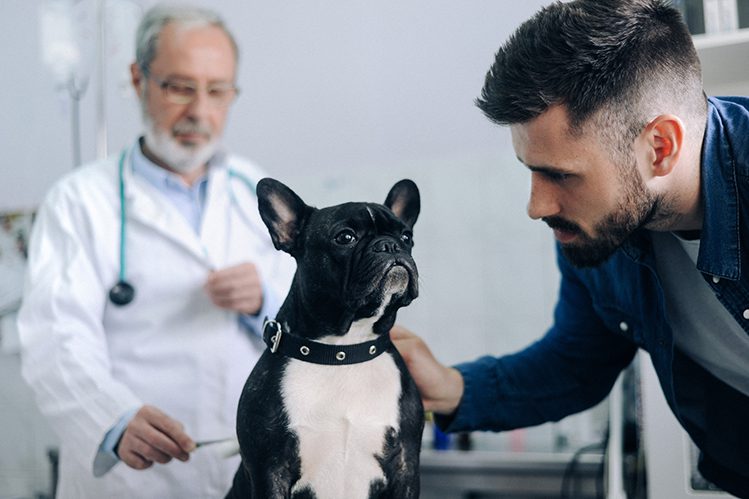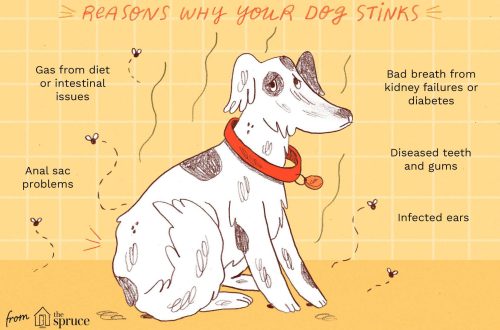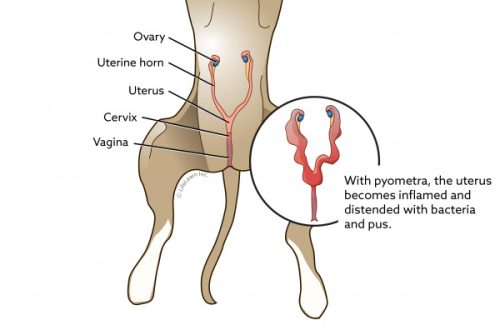
How to help a dog with poisoning?
Every pet owner tries to protect their pet from illness and injury. But no dog is immune from poisoning. The dog’s digestive system is quite resistant to the consequences caused by eating “stale” food, but there is always a risk of poisoning, even death.
Let’s figure out how to provide first aid to a dog in case of poisoning and why, in case of trouble, it is important to deliver the pet to the veterinary clinic as quickly as possible?
Contents
Signs of poisoning in a dog
What symptoms indicate poisoning?
Among the characteristic features:
weakness,
shiver,
profuse salivation,
vomiting,
diarrhea,
convulsions
pain in the abdomen,
shallow breathing,
depressed state or, on the contrary, strong excitement.
If these symptoms appear suddenly and get worse every minute, your pet is most likely poisoned.
Please note that it is highly desirable to provide first aid to a dog in case of poisoning within 30 minutes. Within an hour or two, toxic substances can be completely absorbed into the blood. Then it will be much more difficult to help the pet, procedures will be required in a well-equipped veterinary clinic.
The impact of some poisons on the body becomes noticeable not immediately, but after several hours or even days. Rat poison suppresses the production of vitamin K in the body and thus interferes with blood clotting, but bloody discharge and a clearly sickly appearance of the pet may occur only after three to five days.

First aid, and – to the veterinarian
To provide first aid to a dog in case of poisoning, first of all you need to calm down. Your task is to quickly carry out manipulations that will alleviate the condition of the injured dog, and deliver the pet to the veterinary clinic or call the veterinarian at home. If you are very far from the nearest veterinary clinic, provide assistance to your ward under the guidance of your veterinarian, communicating with him by phone or video link.
- Step 1. Induce vomiting by drinking heavily and pressing on the root of the tongue. Give your dog water to drink using a syringe without a needle or douche. Make sure that your fingers remain outside the dog’s jaws – in case of poisoning against the background of poor health and stress, aggression and bites are possible.
Induce vomiting no more than twice. Do not feed the dog in case of poisoning, let’s drink – water and adsorbents. Probiotics should always be in your pet’s first aid kit, such as Pro-Kolin. They will help neutralize the action of toxins inside the body.
If there is a suspicion that you are dealing with poisoning with an agent containing acid, alkali, you do not need to induce vomiting, the repeated passage of these substances through the esophagus will cause a chemical burn.
- Step 2. Contact your veterinarian. You need to do this in any case, even if it seems to you that nothing threatens the dog’s condition. Tell the veterinarian in detail about what happened to the dog and what help you provided. If you have a sample of poison on hand (for example, in case of poisoning with household chemicals), you need to take it with you to the veterinary clinic so that it is easier for a specialist to determine the nature of the poisoning and the required antidote.
You should definitely consult a veterinarian also because the symptoms that seem to indicate poisoning may coincide with the symptoms when a foreign body enters the dog’s body. This is also why it is important not to take global measures until the pet has been examined by a veterinarian.
Even with mild poisoning, a pet needs therapy to restore the functioning of the heart, kidneys and other organs. Only a veterinarian can assess the health of a dog and prescribe medication.
It is important to get help as soon as possible. Make sure in advance that the contacts of the veterinarian or clinic are in a prominent place and enter them into your phone.
In case of poisoning, do not give your dog antiemetics. At the first stage, our task is just to induce vomiting, and not to stop it.

Prevention: how to protect pets from poisoning
It is important to know how to help a dog in case of poisoning. But it is even more important to prevent the ingress of toxic substances into the body of a pet.
- Be sure to wean your ward to pick up something on the street. There are pets who love to “vacuum” the space around them, but on the street they will come across at best a wormy apple. At the initial stage, you can secure the dog with a muzzle.
Practice with the pet team “Fu!” and “Show me!” Explore articles and educational videos from dog training and behavior correction experts to help you and your pet get more out of it. Believe me, soon the need for a muzzle will disappear. If classes with your ward are not crowned with success, there is always the opportunity to seek help from professionals – cynologists and zoopsychologists.
If you notice during a walk that the pet nevertheless picked up something from the ground, it is better to play it safe and not wait for symptoms of poisoning.
- In the house, hide household chemicals from pets. Place traps from ants and other intruders where the dog cannot climb or get through. Try to avoid chemical cleaners, which can cause allergies or poisoning in pets, if possible. Remember that dogs’ curiosity is limitless – always keep medicines away.
- Block access to the trash can.
- Do not give your dog your food: human food is not suitable for pets and can cause digestive upset.
We hope that our recommendations will help you prepare for any sudden situations and, even better, prevent them. We wish health to your pets!





